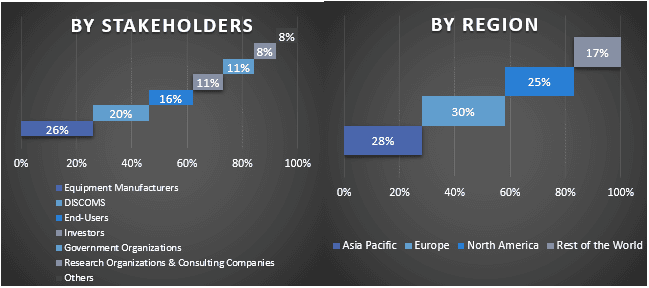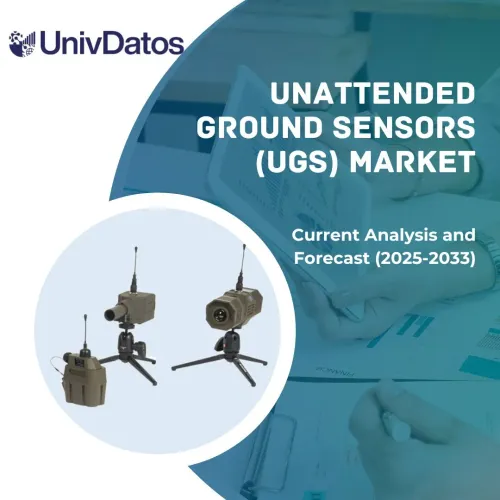- Inicio
- Acerca de nosotros
- Industria
- Servicios
- Leyendo
- Contáctenos
Mercado de resistencias de filtro armónico: análisis actual y pronóstico (2022-2028)
Énfasis en el tipo de producto (tipo C, sintonizado individualmente, de segundo orden y de tercer orden); usuarios finales (centrales eléctricas, industriales y otros); y región/país

Se espera que el mercado de resistencias de filtro armónico crezca a una fuerte CAGR de alrededor del 5% durante el período de pronóstico debido a la creciente necesidad de reducir las pérdidas de la línea junto con su mayor confiabilidad, mayor aislamiento y menor temperatura de trabajo. La demanda de resistencias de filtro armónico en la industria eléctrica está impulsando el crecimiento de las resistencias de filtro armónico debido a varios factores. En primer lugar, el uso cada vez mayor de la electrónica de potencia en diversas aplicaciones industriales y comerciales, como las centrales eléctricas, ha provocado la generación de distorsión armónica en el sistema eléctrico. Esta distorsión puede causar problemas como daños en los equipos, reducción de la eficiencia y aumento del consumo de energía. Por lo tanto, para garantizar el buen funcionamiento de estos sistemas y cumplir con los requisitos reglamentarios, se ha vuelto necesario el uso de resistencias de filtro armónico. Además, la creciente demanda de transmisión y distribución de energía eficientes está impulsando el crecimiento del mercado de resistencias de filtro armónico. Las redes de transmisión y distribución de energía deben operar de manera eficiente para satisfacer la creciente demanda de electricidad. Las resistencias de filtro armónico pueden ayudar a reducir la cantidad de energía perdida debido a la distorsión armónica, mejorando así la eficiencia del sistema eléctrico. Además, los avances tecnológicos en el campo de las resistencias de filtro armónico han llevado al desarrollo de soluciones más eficientes y rentables.
Algunos de los principales actores que operan en el mercado son Telema spa, MegaResistors, Hilkar, Vishay Intertechnology, Inc., Resisturk Electric (TR) Ltd, Backer AB, NATIONAL SWITCHGEARS, Filnor, Inc., Post Glover Resistors y Metal Deploye Resitor. Estos actores han emprendido varias fusiones y adquisiciones junto con asociaciones para facilitar a los clientes productos/tecnologías innovadores y de alta tecnología.
Conclusiones presentadas en el informe
“Entre los tipos de productos, el segmento de tercer orden mantuvo una cuota dominante del mercado en 2021”
Según el tipo de producto, el mercado se segmenta en tipo C, sintonizado único, segundo orden y tercer orden. Se espera que el segmento de tercer orden mantenga una cuota de mercado significativa durante el período de pronóstico. Los filtros armónicos de tercer orden son el tipo más avanzado de filtro armónico y constan de múltiples capacitores, inductores y resistencias que están conectados de una manera específica para formar un filtro de tercer orden. Estos filtros son capaces de reducir la distorsión armónica a niveles muy bajos. Además, el diseño de los filtros armónicos de tercer orden es complejo y requiere una consideración cuidadosa de los requisitos específicos del sistema eléctrico. Los componentes del filtro deben seleccionarse y optimizarse cuidadosamente para garantizar que el filtro sea eficaz para reducir la distorsión armónica y minimizar el impacto en la estabilidad del sistema y la calidad de la energía.
“Entre los usuarios finales, el segmento de centrales eléctricas registra una CAGR significativa durante el período de pronóstico”
Según los usuarios finales, el mercado se segmenta en centrales eléctricas, industriales y otros. Se espera que el segmento de centrales eléctricas registre una CAGR significativa durante el período de pronóstico debido a la creciente necesidad de una transmisión y distribución de energía eficientes, que se está volviendo más crítica a medida que la población mundial continúa creciendo y la demanda de electricidad aumenta. Las resistencias de filtro armónico pueden ayudar a mejorar la eficiencia de los sistemas de transmisión y distribución de energía al reducir la cantidad de energía perdida debido a la distorsión armónica. Además, los problemas de calidad de la energía, como la distorsión armónica, pueden tener un impacto negativo en el rendimiento y la longevidad de los equipos eléctricos, incluidos los motores, transformadores y generadores. Las resistencias de filtro armónico pueden ayudar a mejorar la calidad de la energía al reducir la cantidad de distorsión armónica en el sistema eléctrico.
Cobertura del informe del mercado de resistencias de filtro armónico

“Asia-Pacífico dominó el mercado de resistencias de filtro armónico en 2021”
La necesidad de una transmisión y distribución de energía eficientes es cada vez más crítica en la región de Asia-Pacífico, debido al crecimiento de la población y la creciente demanda de electricidad. Las resistencias de filtro armónico pueden ayudar a mejorar la eficiencia de los sistemas de transmisión y distribución de energía al reducir la cantidad de energía perdida debido a la distorsión armónica. Muchos países de la región de Asia-Pacífico tienen regulaciones vigentes que exigen que los sistemas eléctricos cumplan con ciertos niveles de distorsión armónica. La implementación de estas regulaciones está impulsando la demanda de resistencias de filtro armónico para ayudar a garantizar el cumplimiento de estos estándares. En general, el crecimiento de las resistencias de filtro armónico en las centrales eléctricas en la región de Asia-Pacífico está siendo impulsado por una combinación de factores, que incluyen la rápida industrialización, la creciente demanda de transmisión y distribución de energía eficientes, los requisitos reglamentarios, los avances tecnológicos y la necesidad de una mejor calidad de la energía. A medida que estos factores continúan dando forma al mercado, se espera que la demanda de resistencias de filtro armónico continúe creciendo en los próximos años.
Razones para comprar este informe:
- El estudio incluye análisis de tamaño y pronóstico del mercado validados por expertos clave autenticados de la industria.
- El informe presenta una revisión rápida del desempeño general de la industria de un vistazo.
- El informe cubre un análisis en profundidad de los pares destacados de la industria con un enfoque principal en las finanzas comerciales clave, las carteras de productos, las estrategias de expansión y los desarrollos recientes.
- Examen detallado de los impulsores, las restricciones, las tendencias clave y las oportunidades que prevalecen en la industria.
- El estudio cubre exhaustivamente el mercado en diferentes segmentos.
- Análisis profundo a nivel regional de la industria.
Opciones de personalización:
El mercado global de resistencias de filtro armónico se puede personalizar aún más según los requisitos o cualquier otro segmento de mercado. Además de esto, UMI entiende que puede tener sus propias necesidades comerciales, así que no dude en conectarse con nosotros para obtener un informe que se adapte completamente a sus requisitos.
Tabla de contenido
Metodología de investigación para el análisis del mercado de resistencias de filtro armónico (2022-2028)
El análisis del mercado histórico, la estimación del mercado actual y la previsión del mercado futuro del mercado mundial de resistencias de filtro armónico fueron los tres pasos principales que se llevaron a cabo para crear y analizar la adopción de resistencias de filtro armónico en las principales regiones del mundo. Se llevó a cabo una exhaustiva investigación secundaria para recopilar las cifras históricas del mercado y estimar el tamaño actual del mercado. En segundo lugar, para validar estas conclusiones, se tuvieron en cuenta numerosos hallazgos y supuestos. Además, también se realizaron exhaustivas entrevistas primarias con expertos de la industria a lo largo de la cadena de valor del mercado mundial de resistencias de filtro armónico. Tras la asunción y validación de las cifras del mercado a través de entrevistas primarias, empleamos un enfoque de arriba abajo/abajo arriba para pronosticar el tamaño total del mercado. Posteriormente, se adoptaron métodos de desglose del mercado y triangulación de datos para estimar y analizar el tamaño del mercado de los segmentos y subsegmentos de la industria a la que pertenece. La metodología detallada se explica a continuación:
Análisis del tamaño histórico del mercado
Paso 1: Estudio en profundidad de fuentes secundarias:
Se llevó a cabo un estudio secundario detallado para obtener el tamaño histórico del mercado de resistencias de filtro armónico a través de fuentes internas de la empresa, como informes anuales y estados financieros, presentaciones de rendimiento, comunicados de prensa, etc., y fuentes externas, incluidos revistas, noticias y artículos, publicaciones gubernamentales, publicaciones de la competencia, informes del sector, bases de datos de terceros y otras publicaciones creíbles.
Paso 2: Segmentación del mercado:
Después de obtener el tamaño histórico del mercado de resistencias de filtro armónico, realizamos un análisis secundario detallado para recopilar información histórica del mercado y compartirla para diferentes segmentos y subsegmentos para las principales regiones. Los principales segmentos que se incluyen en el informe son el tipo de producto y los usuarios finales. Además, se realizaron análisis a nivel de país para evaluar la adopción general de modelos de prueba en esa región.
Paso 3: Análisis de factores:
Después de adquirir el tamaño histórico del mercado de diferentes segmentos y subsegmentos, llevamos a cabo un análisis de factores detallado para estimar el tamaño actual del mercado de resistencias de filtro armónico. Además, realizamos un análisis de factores utilizando variables dependientes e independientes, como el tipo de producto y los usuarios finales del mercado de resistencias de filtro armónico. Se llevó a cabo un análisis exhaustivo de los escenarios de demanda y oferta teniendo en cuenta las principales asociaciones, fusiones y adquisiciones, la expansión empresarial y los lanzamientos de productos en el sector del mercado de resistencias de filtro armónico en todo el mundo.
Estimación y previsión del tamaño actual del mercado
Cálculo del tamaño actual del mercado: Basándonos en la información práctica de los 3 pasos anteriores, llegamos al tamaño actual del mercado, los principales actores en el mercado mundial de resistencias de filtro armónico y las cuotas de mercado de los segmentos. Todos los porcentajes de participación requeridos y los desgloses del mercado se determinaron utilizando el enfoque secundario mencionado anteriormente y se verificaron a través de entrevistas primarias.
Estimación y previsión: Para la estimación y previsión del mercado, se asignaron ponderaciones a diferentes factores, incluidos los impulsores y las tendencias, las restricciones y las oportunidades disponibles para las partes interesadas. Después de analizar estos factores, se aplicaron las técnicas de previsión pertinentes, es decir, el enfoque de arriba abajo/abajo arriba, para llegar a la previsión del mercado para 2028 para diferentes segmentos y subsegmentos en los principales mercados a nivel mundial. La metodología de investigación adoptada para estimar el tamaño del mercado abarca:
- El tamaño del mercado de la industria, en términos de ingresos (USD) y la tasa de adopción del mercado de resistencias de filtro armónico en los principales mercados a nivel nacional
- Todos los porcentajes de participación, divisiones y desgloses de los segmentos y subsegmentos del mercado
- Actores clave en el mercado mundial de resistencias de filtro armónico en términos de productos ofrecidos. Además, las estrategias de crecimiento adoptadas por estos actores para competir en el mercado de rápido crecimiento
Validación del tamaño y la cuota de mercado
Investigación primaria: Se realizaron entrevistas en profundidad con los líderes de opinión clave (KOL), incluidos los ejecutivos de alto nivel (CXO/VP, jefe de ventas, jefe de marketing, jefe de operaciones, jefe regional, jefe de país, etc.) en las principales regiones. Los hallazgos de la investigación primaria se resumieron y se realizó un análisis estadístico para probar la hipótesis establecida. Los datos de la investigación primaria se consolidaron con los hallazgos secundarios, convirtiendo así la información en información práctica.
División de los participantes primarios en diferentes regiones

Ingeniería de mercado
Se empleó la técnica de triangulación de datos para completar la estimación general del mercado y para llegar a cifras estadísticas precisas para cada segmento y subsegmento del mercado mundial de resistencias de filtro armónico. Los datos se dividieron en varios segmentos y subsegmentos después de estudiar varios parámetros y tendencias en las áreas del tipo de producto y los usuarios finales en el mercado mundial de resistencias de filtro armónico.
El objetivo principal del estudio del mercado mundial de resistencias de filtro armónico
Las tendencias actuales y futuras del mercado mundial de resistencias de filtro armónico se señalaron en el estudio. Los inversores pueden obtener información estratégica para basar su discreción para las inversiones en el análisis cualitativo y cuantitativo realizado en el estudio. Las tendencias actuales y futuras del mercado determinaron el atractivo general del mercado a nivel regional, proporcionando una plataforma para que el participante industrial explote el mercado sin explotar para beneficiarse de una ventaja de ser el primero en actuar. Otros objetivos cuantitativos de los estudios incluyen:
- Analizar el tamaño actual y previsto del mercado de resistencias de filtro armónico en términos de valor (USD). Además, analizar el tamaño actual y previsto del mercado de diferentes segmentos y subsegmentos
- Los segmentos del estudio incluyen áreas del tipo de producto y los usuarios finales
- Definir y analizar el marco regulatorio para la industria de resistencias de filtro armónico
- Analizar la cadena de valor involucrada con la presencia de varios intermediarios, junto con el análisis de los comportamientos de los clientes y la competencia de la industria
- Analizar el tamaño actual y previsto del mercado de resistencias de filtro armónico para la región principal
- Los principales países de las regiones estudiadas en el informe incluyen Asia Pacífico, Europa, Norteamérica y el resto del mundo
- Perfiles de empresa del mercado de resistencias de filtro armónico y las estrategias de crecimiento adoptadas por los actores del mercado para mantenerse en el mercado de rápido crecimiento
- Análisis regional en profundidad de la industria
Relacionados Informes
Los clientes que compraron este artículo también compraron









